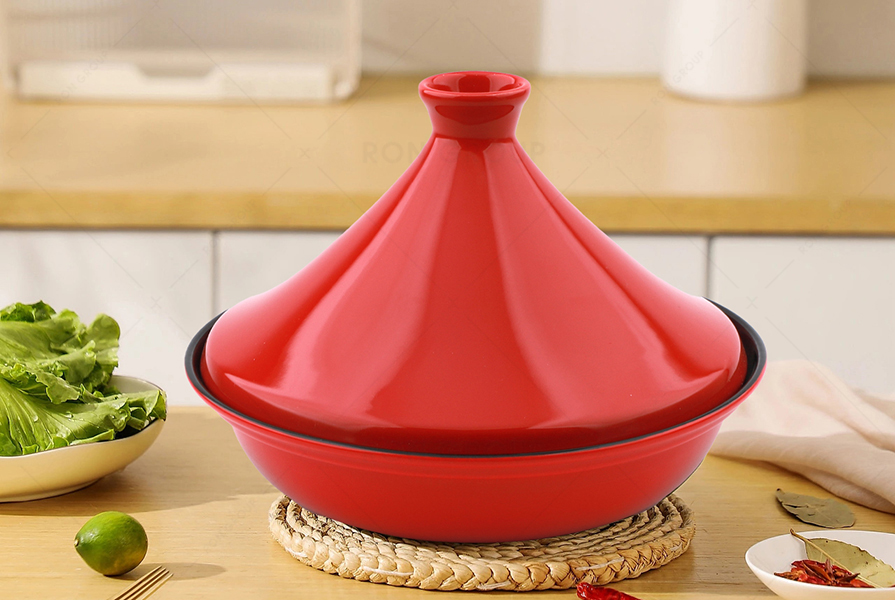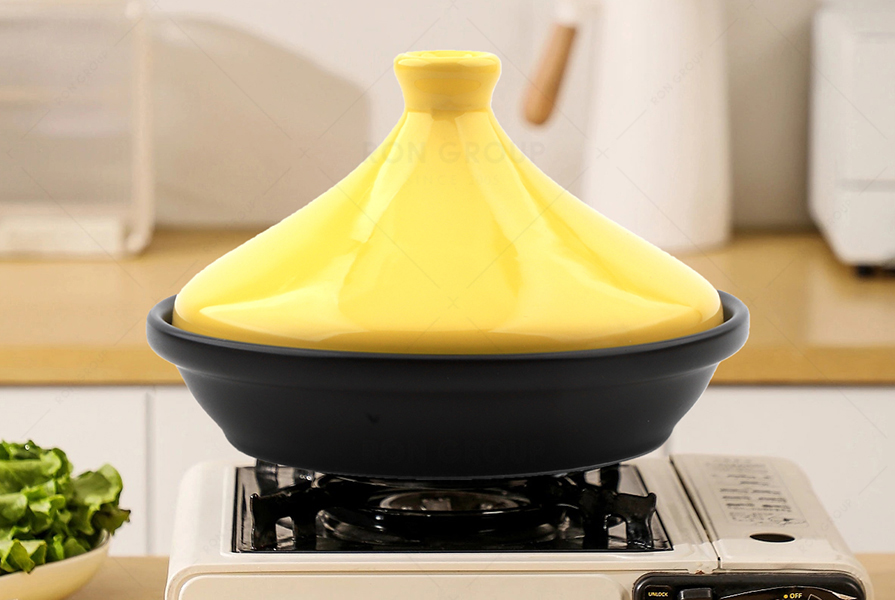
Ron Wong
86-13380258855
sales@rongroup.co

Key Benefits of Cooking with a Tagine
Flavor Enhancement: The slow-cooking process in a tagine enhances the natural flavors of the ingredients. Spices like cumin, coriander, turmeric, and cinnamon meld beautifully, creating complex taste profiles.
Nutritional Benefits: Tagine cooking is healthy, using low heat and minimal fat. The slow cooking method helps in retaining the nutrients of the ingredients, making it a wholesome choice.
Versatility: From succulent lamb or chicken to flavorful vegetarian options, a tagine can cook a variety of dishes. It can be used for both cooking and serving, making it a practical addition to any kitchen.

How to Use a Tagine
Seasoning Your Tagine: Before using a ceramic or clay tagine, it's important to season it to prevent cracking and enhance its cooking properties. This involves soaking it in water, drying it, and then heating it with oil.
Cooking Techniques: Tagine dishes are cooked over a low flame. The ingredients are layered, typically with meat at the bottom and vegetables and spices on top. As the tagine heats up, steam rises into the cone, condenses, and then trickles back down, basting the dish in its flavorful juices.
Serving: A tagine can go directly from stovetop or oven to table, its aesthetic presentation adding to the dining experience. It's traditionally served with bread, like khobz, used to scoop up the dish.

Recipe Ideas for Your Tagine
Classic Moroccan Lamb Tagine: Combine lamb with apricots, raisins, almonds, and a rich blend of Moroccan spices for a sweet and savory meal.
Chicken and Olive Tagine: This popular dish features chicken marinated in garlic, lemon, and saffron, cooked with olives and preserved lemons.
Vegetarian Tagine: Mix seasonal vegetables with a blend of herbs and spices, such as ginger and saffron, for a hearty plant-based meal.






Ron Group
86-13380258855
sales@rongroup.co
